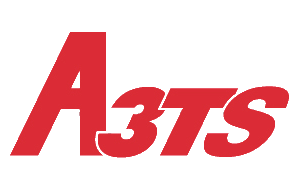Manganese phosphating on steel
N.B.: The information contained in this sheet comes from reliable sources. Nevertheless, it is provided without any guarantee, express or implied, of its accuracy.
Principle:
DESCRIPTION OF THE PROCESS
It is a chemical conversion treatment called Manganese or Iron-Manganese phosphatization. This treatment is carried out by immersion in an acid bath containing phosphate ions and Manganese ions. The steel is partially dissolved and a layer of mixed iron and manganese phosphates [(Mn,Fe)5 H2(PO4)4, 4H2O] is precipitated.
Manganese phosphating must be followed by a lubrication to avoid corrosion of the underlying steel. This is called "Fatty Manganese Phosphating" or "Fatty Finish Manganese Phosphating". Indeed, the crystallographic structure of the deposit (sand pink type) allows a good retention of oils and greases.
SUBSTRATE
Ce traitement est applicable sur des aciers avec une teneur en éléments d’alliages < 5%. Le traitement est plus délicat sur les aciers alliés avec une teneur en éléments d’alliages >5%.
FUNCTIONAL APPLICATIONS
The treatment is recommended for parts where it is needed:
A capacity of friction / sliding under low to medium load (anti-friction)
Temporary storage protection
The cohabitation of painted and unpainted areas that are functional for a rubbing application
Of a sought-after grey-black coloring
This treatment is not recommended in the following cases:
Functional application with medium to severe abrasive wear
Functional application requiring surface hardness
Friction under heavy loads
Long-term corrosion resistance or in severe environments
Entirely painted parts (Zinc phosphatization will be chosen)
THICKNESSES
The thickness of the treatment is not a usual criterion. The criterion used is the coating weight. The only reference standard NF A91-501, NF ISO 9717 - 07/13 indicates a coating weight between 1 and 30 g/m².
For applications with partially painted areas, however, we recommend a coating weight > 7.5 g/m² to ensure corrosion resistance, and rather less than 15 g/m² to ensure good paint adhesion without the risk of crystallite fracture in the paint adhesion test.
USER SECTORS General mechanics, armament, transport ...
ENVIRONMENTAL IMPACT
Manganese phosphatizing does not generally use substances that are subject to human health regulations or environmental risks.
However
some ranges may still use an anti-corrosion finish, also known as "passivating rinse". Some of these finishes are based on chromates (CrVI) which are in annex XIV of the REACh regulation.
Some formulations use Nickel salts. These substances are not yet regulated by REACH, but are under discussion for classification in Annex XIV or XVII.
INDICATIVE PERFORMANCE
Ability to rub
Increase in surface hardness
Good with oil finish
No improvement
Ability to be painted
Corrosion resistance (salt spray)
Good
2H BS without oil finish. 96H BS before Red Oxidation with oil finish not renewed
Hydrogen Fragilization
Without if mechanical preparation
REFERENCE
NF A91-501, NF ISO 9717 - 07/13 - Metallic and other inorganic coatings
Phosphate conversion coatings on metals
NF A91-474, NF EN ISO 3892 - 11 / 01- Conversion coatings on metallic materials
Determination of the coating mass per unit area - Gravimetric methods
The information contained in this fact sheet has been obtained from reputable sources. Nevertheless, it is provided without any guarantee, express or implied, of its accuracy
Implementation
Main equipment (furnace, reactor, line, machine...)
If you are a company interested in being listed on this page, please contact us: a3ts@a3ts.org
